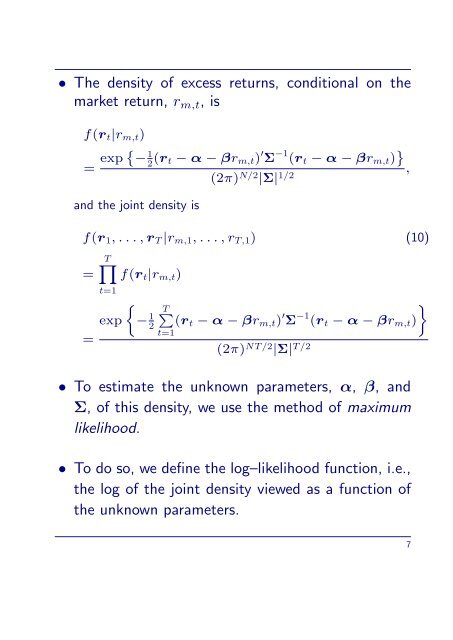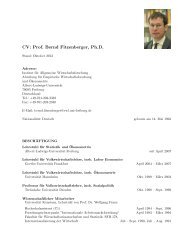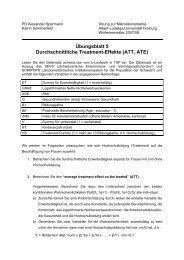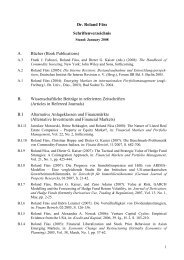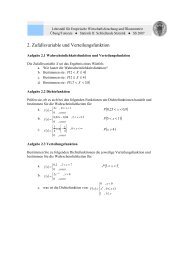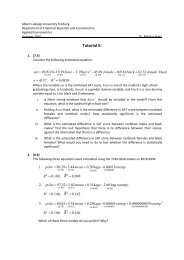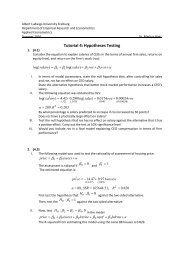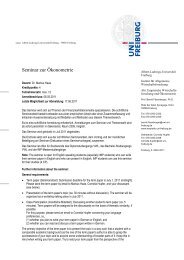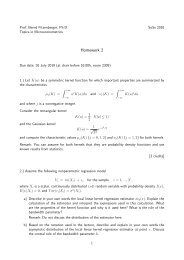Statistical Analysis of the CAPM I. Sharpe–Linter CAPM
Statistical Analysis of the CAPM I. Sharpe–Linter CAPM
Statistical Analysis of the CAPM I. Sharpe–Linter CAPM
Create successful ePaper yourself
Turn your PDF publications into a flip-book with our unique Google optimized e-Paper software.
• The density <strong>of</strong> excess returns, conditional on <strong>the</strong><br />
market return, rm,t, is<br />
f(rt|rm,t)<br />
= exp { −1 2 (rt − α − βrm,t) ′ Σ −1 (rt − α − βrm,t) }<br />
,<br />
and <strong>the</strong> joint density is<br />
(2π) N/2 |Σ| 1/2<br />
f(r1, . . . , rT |rm,1, . . . , rT,1) (10)<br />
=<br />
=<br />
T∏<br />
t=1<br />
exp<br />
f(rt|rm,t)<br />
{<br />
− 1<br />
2<br />
T∑<br />
(rt − α − βrm,t) ′ Σ −1 }<br />
(rt − α − βrm,t)<br />
t=1<br />
(2π) NT/2 |Σ| T/2<br />
• To estimate <strong>the</strong> unknown parameters, α, β, and<br />
Σ, <strong>of</strong> this density, we use <strong>the</strong> method <strong>of</strong> maximum<br />
likelihood.<br />
• To do so, we define <strong>the</strong> log–likelihood function, i.e.,<br />
<strong>the</strong> log <strong>of</strong> <strong>the</strong> joint density viewed as a function <strong>of</strong><br />
<strong>the</strong> unknown parameters.<br />
7


